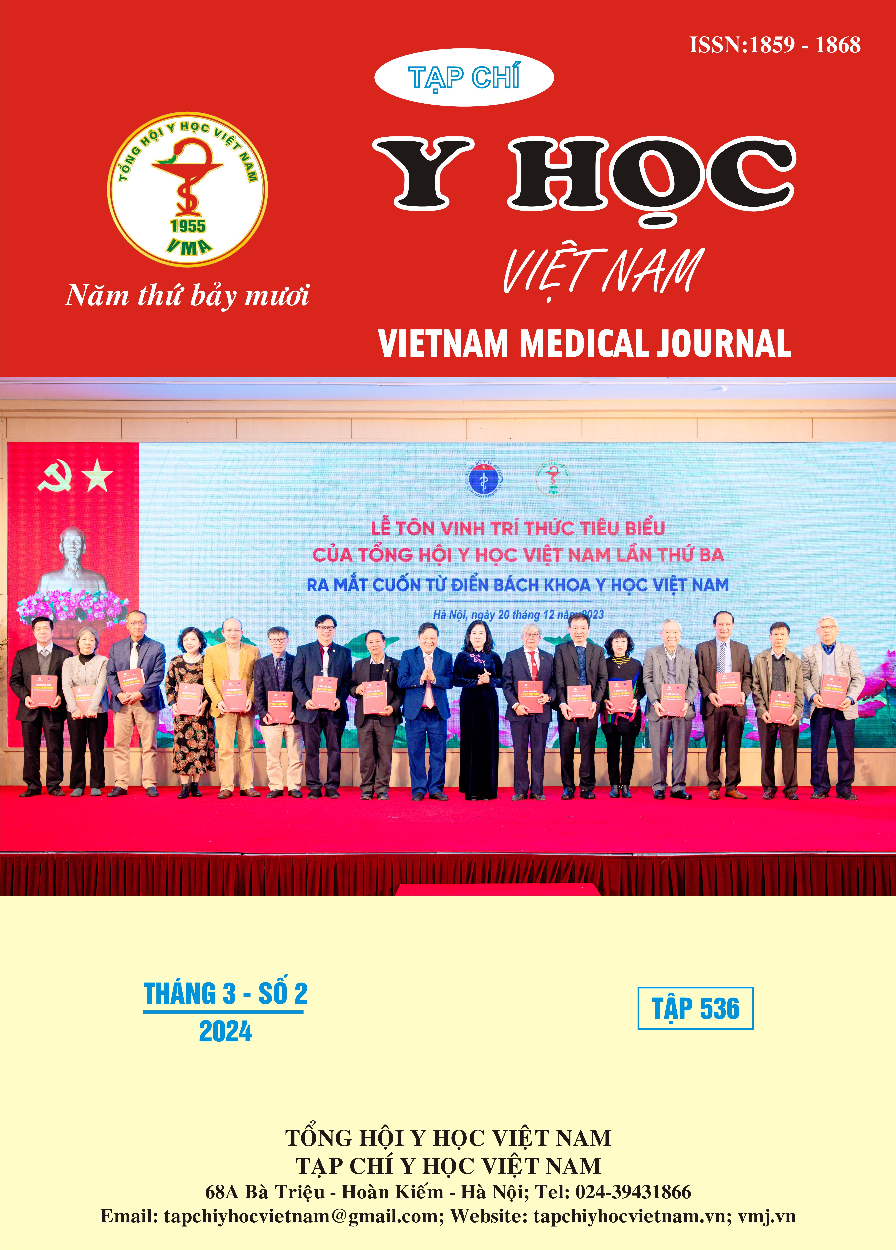EVALUATION OF RETINOPATHY STATUS IN DIABETIC PATIENTS AT NINH BINH GENERAL HOSPITAL
Main Article Content
Abstract
Objective: Describe the clinical characteristics of diabetic retinopathy at Ninh Binh Provincial General Hospital; Assess the stage of diabetic retinopathy and related factors; Survey on artificial intelligence applications to evaluate the retina in diabetic patients. Materials and methods: The study was conducted on patients diagnosed with diabetes who come for examination and treatment at the Endocrinology department, Ninh Binh Provincial General Hospital from January 2023 to September 2023. Cross-sectional descriptive study on 321 patients with 642 eyes. The results of fundus images were classified by an ophthalmologist and compared with the results of Cybersight AI software by the classification standards of the 2017 International Council of Ophthalmology (ICO). Results: The average age of the patients in the study was 68.4 ± 9.5 years old, the proportion of female patients was more dominant than male patients, accounting for 71%. Patients with type 2 diabetes account for the highest rate of 93.5%, the duration of diabetes in the study group is mainly the group of patients whose diabetes was detected for less than 10 years, accounting for 54.9%. The rate of diabetic retinopathy was 152 eyes, accounting for 23.7%. The stage of DR at diagnosis with the highest rate is the mild non-proliferative stage (only microaneurysms) with more than 8%. There are 5% of eyes diagnosed with proliferative stage DR. Eyes without obvious diabetic retinopathy account for 76.3%. There is a close relationship between HbA1C concentration, disease duration with p < 0.05. When analyzing retinal images through the AI image reading system of Cybersight AI software, the rate of diabetic retinopathy accounts for 18.2%. The mild non-proliferative stage accounts for the highest rate at 7.6%. Eyes without diabetic retinopathy lesions account for 81.6%. - The sensitivity of the AI system on Cybersight software compared with the image reading results of a clinical ophthalmologist is Se = 70%, specificity Sp = 98%. Conclusion: Based on the analysis of research results obtained when analyzing fundus photographs of diabetic patients at Ninh Binh Provincial General Hospital to classify diabetic retinopathy by clinicians and the system. AI system on Cybersight software on 642 eyes of 321 patients. The sensitivity of the AI system on Cybersight software compared with the results of image reading by clinical ophthalmologists is Se = 70%, specificity Sp = 98%. There is a close relationship between HbA1C and blood sugar levels and diabetic retinopathy.
Article Details
References
2. Thái, H. Q. Góp phần nghiên cứu biến chứng mạn tính trong bệnh đái tháo đường. (1989).
3. Shaw, J. E., Sicree, R. A. & Zimmet, P. Z. Global estimates of the prevalence of diabetes for 2010 and 2030. Diabetes Res. Clin. Pract. 87, 4–14 (2010).
4. Kalavar, M. et al. Applications of Artificial Intelligence for the Detection, Management, and Treatment of Diabetic Retinopathy. Int. Ophthalmol. Clin. 60, 127–145 (2020).
5. Teo, Z. L. et al. Global Prevalence of Diabetic Retinopathy and Projection of Burden through 2045: Systematic Review and Meta-analysis. Ophthalmology 128, 1580–1591 (2021).
6. Zegeye, A. F., Temachu, Y. Z. & Mekonnen, C. K. Prevalence and factors associated with Diabetes retinopathy among type 2 diabetic patients at Northwest Amhara Comprehensive Specialized Hospitals, Northwest Ethiopia 2021. BMC Ophthalmol. 23, 9 (2023).
7. Klein, R., Klein, B. E. K., Moss, S. E., Davis, M. D. & DeMets, D. L. The Wisconsin Epidemiologic Study of Diabetic Retinopathy: III. Prevalence and Risk of Diabetic Retinopathy When Age at Diagnosis Is 30 or More Years. Arch. Ophthalmol. 102, 527–532 (1984).
8. Group, B. M. J. P. Tight blood pressure control and risk of macrovascular and microvascular complications in type 2 diabetes: UKPDS 38. BMJ 317, 703–713 (1998).


